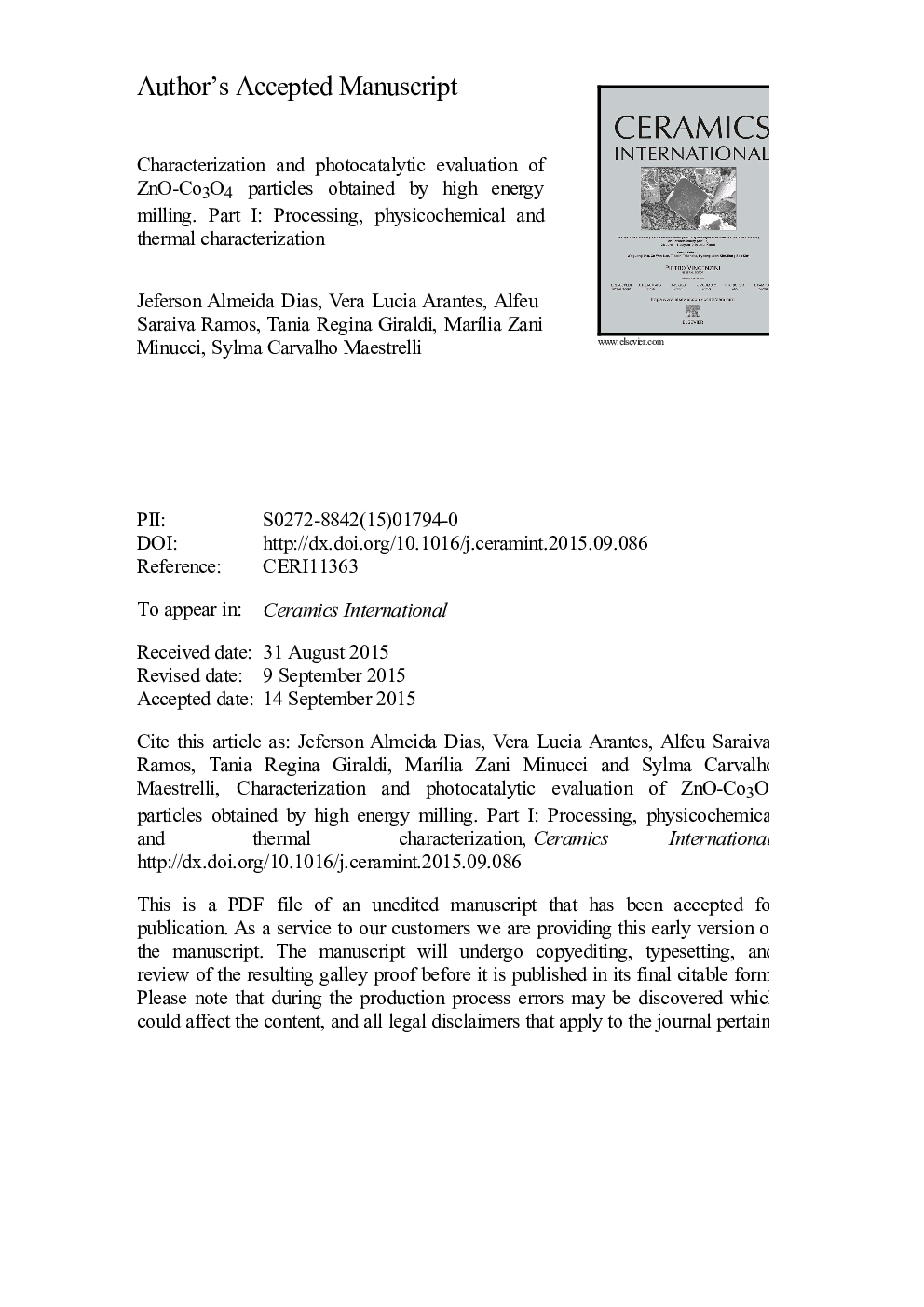| Article ID | Journal | Published Year | Pages | File Type |
|---|---|---|---|---|
| 10624479 | Ceramics International | 2016 | 31 Pages |
Abstract
In this paper the high energy milling was evaluated as a technique to obtain fine powders in the ZnO-Co3O4 system for utilization in photocatalytic processes. This study was divided in two parts named part I and II: the first part (present article, part I) describes the methodology of processing and the powders characterization before and after the milling; the second part (that will be present in a second article, part II) is related to the photocatalytic evaluation of the milled materials. At the first part, the raw materials (ZnO and Co3O4 powders) were characterized by Sedigraph technique, BET Analysis, Helium Pycnometry, X-Ray diffraction and Thermal Analysis (DSC/TGA) aiming to know their physicochemical, structural and thermal properties. The raw materials (95% ZnO, 5% Co3O4, molar ratio) were milled during four and ten hours (the dry and wet media milling were investigated). One sample was thermally treated in order to solubilize the cobalt in the zinc oxide lattice aiming the formation of the Zn0.95Co0.05O solid solution. The milled and heat-treated powders were characterized by X-ray diffraction and thermal analyses (DSC/TGA). The samples milled during ten hours also were analyzed by scanning electron microscopy. The results indicated that the starting materials were obtained in a micrometric scale and presented high purity. Moreover, there was observed any phase transformation or any detectable contamination of the materials during the milling. The powders showed nanocrystalline characteristics in all of conditions of milling; however, the comminution was more effective for powders milled in wet medium. The thermal treatment was efficient to obtain a ZnO-CoO solid solution.
Related Topics
Physical Sciences and Engineering
Materials Science
Ceramics and Composites
Authors
Jeferson Almeida Dias, Vera Lucia Arantes, Alfeu Saraiva Ramos, Tania Regina Giraldi, MarÃlia Zani Minucci, Sylma Carvalho Maestrelli,
